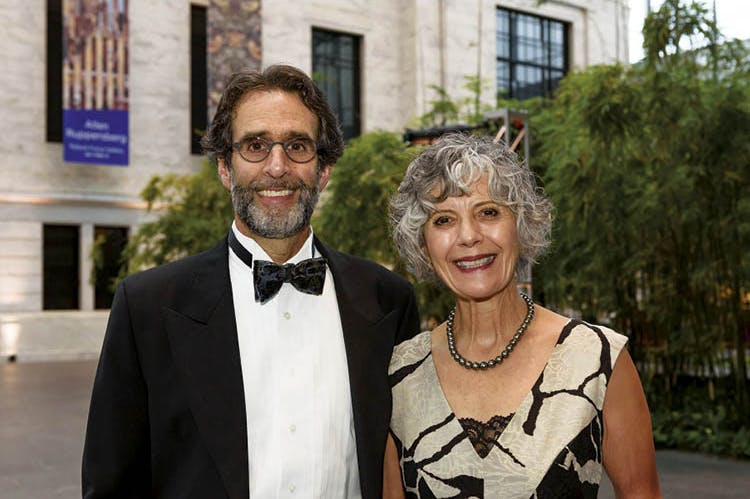- Magazine Article
- Support
Meet Dr. Ximena Valdes Sessler

Dr. Ximena Valdes Sessler
Dr. Daniel Sessler and Dr. Ximena Valdes Sessler discovered the CMA 15 years ago when they relocated to Cleveland after Daniel was offered a job at Cleveland Clinic. Valdes Sessler is a retired physician whose clinical work included pediatrics, pediatric cardiology, and global health. She now volunteers for the CMA as a docent for children.
How did you and Daniel begin your philanthropic journey with the CMA?
Philanthropy has always been important to us, and we support dozens of social, scientific, and cultural organizations. We have consistently championed our local art museum everywhere we have lived. It was an easy decision in Cleveland. We consider it an honor to give to the Cleveland Museum of Art—a spectacular cultural treasure. In 2012 we made a larger commitment and bequeathed the museum with an educational endowment to support art education programs for school-age children.
What was your first experience with the museum?
In 2005 my husband was recruited by Cleveland Clinic to found and chair the Department of Outcomes Research. During his initial interview visit, the clinic arranged a tour of the city for us, which included a half-hour visit to the CMA. We were sold! By the time we relocated, the CMA was closed for renovations, so we ended up discovering the depth of the collection in stages as it gradually reopened to the public.
How did you decide to lend an artwork to the exhibition A Graphic Revolution: Prints and Drawings in Latin America?
I was born and raised in Chile, so when I first heard of the exhibition, I knew it would include work by Roberto Matta, an important Chilean artist, given that the CMA owns a print by him. I thus offered our own Matta print to associate curator Britany Salisbury, who agreed to include it. Britany did an outstanding job featuring Latin American artists’ contributions to the art world and to social change as well as highlighting the CMA’s great collection of prints. I was especially pleased to see that the artwork labels were written in both Spanish and English.
How did you become interested in collecting prints and drawings?
Dan started collecting art when he was 12 years old—really! His mother encouraged him to use a gift from his grandfather to buy a series of a dozen prints, organized to benefit the University of Geneva, where they lived at the time. It included works by Pablo Picasso, Mark Tobey, Joan Miró, and Victor Vasarely. I began collecting in Los Angeles, and we combined our compatible collections when we married. Over time we have added more prints and drawings, along with oils, sculpture, and other works. We are members of the Print Club of Cleveland, for which I co-chair programming. We love prints and drawings, and as members of the Print Club we receive a new print every year to add to our collection.
What connections have you and Daniel, as physicians, discovered between the arts and sciences through your experiences with the CMA?
Art is universal and reflects the problems, aspirations, and successes of humanity. Science and art are always connected. Since my retirement, I have been volunteering as a docent for children at the museum, where I enjoy identifying connections between art and science. Dan collaborates with investigators worldwide and has trained nearly 200 international medical graduates in clinical research. We enjoy taking his trainees on tours of the CMA!